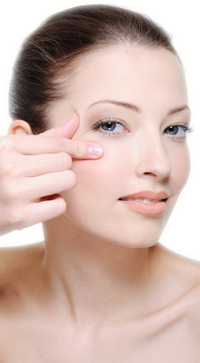
Eyelid surgery, or blepharoplasty, is a surgical procedure to improve the appearance of the eyelids. Surgery can be performed on the upper lids, lower lids or both.
Blepharoplasty treat loose or sagging skin that creates folds or disturbs the natural contour of the upper eyelid, sometimes impairing vision and fatty deposits that appear as puffiness in the eyelids. The procedure also treat bags under the eyes, drooping lower eyelids that reveal white below the iris, excess skin and fine wrinkles of the lower eyelid.
The eyelids are part of the face. The appearance of a drooping upper lid may also be due to relaxation of the forehead skin and eyebrow. Sometimes stretching out of the upper eyelid muscle may cause a drooping eyelid. This is called eyelid ptosis and requires a different surgical treatment.
The procedure
Blepharoplasty can be done under local, intravenous or general anesthesia.
The incision lines for eyelid surgery are designed so the resultant scars will be well concealed within the natural structures of the eyelid region.
The upper eyelid can be corrected through an incision within the natural crease on the eyelid. This allows for removal or repositioning of fat deposits, tightening of muscles and removal of excess skin. Conditions of the lower eyelid may be corrected with an incision just below the lower lash line. Through this incision, excess skin in the lower eyelid is removed. Again, the excess fat can be repositioned or removed.
A transconjunctival incision, created on the inside of the lower eyelid, is an alternate technique to correct lower eyelid conditions and redistribute or remove excess fat. With this technique, no skin is removed.
Eyelid incisions typically are closed with sutures or skin glue. Sutures are removed within four days.
The results of eyelid surgery will appear gradually as swelling and bruising subside to reveal a smooth, better-defined eyelid and surrounding region, and a more alert and rejuvenated appearance.
The rejuvenation is localized to a specific anatomical area and does not affect the whole face.
The degree of rejuvenation depends on plastic surgeon’s skills and a number of other factors such as age, body weight, type of skin, living conditions and general health of the person.
It is a good choice only in localized eyelid relaxation. In cases with total face relaxation the procedure must be combined with facelift.
Recovery
During eyelid surgery recovery, lubricating ointment and cold compresses may be applied. Initial healing may include some swelling, bruising, irritation, dry eyes and discomfort that can be controlled with medication, cold compresses and ointment. Irritation at the incision sites is also possible.
Diligent sun protection and use darkly tinted sunglasses until the healing process is fully complete is recommended. The results of eyelid surgery will be long-lasting. While there usually is little pain involved in this surgery, there can be swelling or bruising. Most patients are presentable to the public in 10-14 days. However, it may take a few months before final healing is completed.

